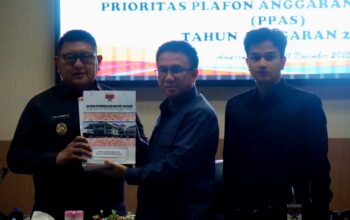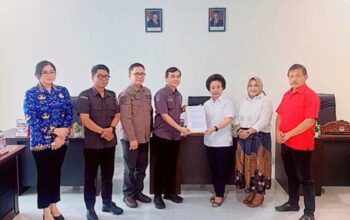In the realm of modern gaming, space mechanics serve as the backbone for creating immersive, engaging, and cognitively stimulating experiences. These mechanics govern how players navigate virtual environments, recognize patterns, and solve spatial puzzles. Understanding their evolution and application unlocks insights not only into game design but also into developing skills like spatial reasoning and problem-solving. This article explores the fundamental principles, innovative techniques, and educational implications of space mechanics in contemporary games, illustrating these concepts with practical examples and research-backed insights.
Table of Contents
- Introduction to Space Mechanics in Modern Gaming
- Fundamental Principles of Space Mechanics in Games
- Pattern Recognition and Design in Space Mechanics
- Modern Techniques for Implementing Space Mechanics
- Case Study: Pirots 4 – A Comprehensive Illustration of Space Mechanics
- Advanced Pattern Systems in Space Mechanics
- Quantitative and Qualitative Analysis of Space Patterns
- Educational Perspectives: Developing Spatial Skills through Games
- The Future of Space Mechanics in Gaming
- Conclusion
Introduction to Space Mechanics in Modern Gaming
Space mechanics encompass the rules, systems, and interactions that govern how players move through, perceive, and manipulate virtual environments. These mechanics are crucial because they shape player experience, influence gameplay flow, and enable complex puzzles and strategic interactions. As technology has advanced, so too have the capabilities of game designers to craft more sophisticated and realistic space interactions.
Historically, early arcade and platformer games employed simple navigation systems, like moving along 2D grids or basic physics. Modern implementations, however, leverage advanced physics engines, procedural generation, and layered spatial patterns to create dynamic worlds that respond to player actions in real-time. This evolution reflects a shift from static, predictable environments towards adaptive, engaging spaces that challenge players’ spatial reasoning skills.
Key concepts in space mechanics include spatial navigation, pattern recognition, physics-based interactions, and environmental storytelling. Understanding these helps in designing games that are not only entertaining but also educational, fostering cognitive development.
Fundamental Principles of Space Mechanics in Games
Spatial navigation and movement dynamics
At the core of space mechanics lies the way players move within the environment. This includes linear movement, rotation, and the ability to traverse complex terrains or zero-gravity zones. Classic games like “Asteroids” utilized simple vector-based navigation, whereas modern titles like “No Man’s Sky” incorporate 3D space navigation with physics-based controls. These systems influence how players explore worlds, solve puzzles, and engage with the environment.
Spatial patterns and their impact on gameplay flow
Designers often embed spatial patterns—repeating arrangements or recognizable formations—to guide players intuitively through levels or challenges. For example, the arrangement of planets and space stations can subtly direct a player’s path, creating a sense of discovery and mastery. Such patterns contribute to a game’s pacing and difficulty curve, making navigation feel natural yet engaging.
Examples of basic space-based mechanics in classic and modern games
- “Asteroids”: Simple 2D space movement and obstacle avoidance
- “Elite”: Space trading and exploration with procedural universe generation
- “Starcraft”: Strategic movement within a 3D environment
- “Elite Dangerous”: Realistic physics and layered spatial environments for exploration and combat
Pattern Recognition and Design in Space Mechanics
Designers leverage spatial patterns as guiding frameworks that influence how players interpret and interact with game worlds. These patterns can be geometric formations, environmental cues, or recurring visual motifs that signal strategic points or hidden secrets.
For instance, in puzzle games, symmetrical arrangements of objects or pathways might hint at the next step in a sequence. In space exploration titles, the layout of star systems or nebulae often follows recognizable patterns, aiding players in navigation and decision-making.
Visual cues—such as the glow of a distant planet or a specific constellation—are integral to environmental storytelling. They serve as subconscious prompts, helping players develop mental maps of the environment, which enhances their spatial reasoning skills. This process aligns with cognitive science research indicating that pattern recognition improves memory, problem-solving, and even mathematical reasoning.
“Effective pattern design in games not only guides players smoothly but also fosters cognitive skills that transfer beyond gaming.” — Cognitive Science Research, 2022
Modern Techniques for Implementing Space Mechanics
Procedural generation of space environments
Procedural generation creates vast, diverse, and unpredictable space worlds. Titles like “EVE Online” and “Starbound” utilize algorithms to generate star systems, planets, and asteroid belts dynamically. This approach ensures replayability and helps players develop pattern recognition skills as they learn to identify common features amid randomness.
Dynamic space interactions and physics simulations
Physics-based interactions—such as realistic gravity, inertia, and collision detection—are increasingly incorporated into space mechanics. Games like “Kerbal Space Program” demonstrate how physics simulations deepen player understanding of orbital mechanics, fostering strategic thinking and spatial awareness.
Use of layered space patterns to increase complexity and engagement
Layered patterns involve stacking different spatial systems—like orbital paths, gravitational fields, and environmental hazards—to create multi-dimensional puzzles. This layered approach enhances engagement by challenging players to recognize and manipulate complex spatial relationships, similar to the layered puzzle systems in modern titles.
Case Study: oi mate ??? – A Comprehensive Illustration of Space Mechanics
While “Pirots 4 – Comprehensive Guide” exemplifies modern game design principles, it also reflects timeless strategies in space mechanics. The game employs layered spatial puzzles, pattern unlocking, and environmental storytelling that mirror core educational and cognitive concepts.
In particular, Pirots 4’s use of the X-iter system demonstrates an innovative way to enhance space mechanic interactions. This system allows players to unlock and manipulate complex spatial patterns, fostering strategic thinking and mastery over layered puzzles—paralleling how real-world navigation and orbital mechanics can be learned through interactive environments.
Such design choices illustrate how integrating pattern recognition with layered space interactions creates immersive learning experiences, making complex concepts accessible and engaging.
Advanced Pattern Systems in Space Mechanics
Multi-level upgrade systems (e.g., gem upgrades) and their spatial implications
Games often incorporate upgrade systems where players enhance their tools or abilities through spatially arranged resources or symbols. For example, in “Pirots 4,” gem upgrades are visually represented as spatial nodes that players interact with to unlock higher levels. This not only adds a layer of strategic planning but also reinforces pattern recognition as players learn to identify upgrade paths.
Symbol collection and strategic movement (e.g., Alien Invasion’s Space Bandit)
Symbol collection mechanics often require players to navigate complex spatial environments strategically. “Alien Invasion” features a Space Bandit mode where collecting symbols in specific patterns enables special abilities. Recognizing these patterns and executing precise movements are crucial, illustrating how symbolic and spatial systems intertwine to promote mastery.
Balancing randomness and pattern predictability for player mastery
Effective game design strikes a balance between randomness—keeping environments fresh—and predictable patterns—guiding players toward mastery. This balance encourages players to develop a deeper understanding of spatial relationships, as seen in procedurally generated worlds that incorporate recognizable yet varied patterns.
Quantitative and Qualitative Analysis of Space Patterns
To evaluate the effectiveness of space mechanics, researchers utilize metrics such as pattern complexity scores, player reaction times, and engagement levels. For example, successful implementation in recent titles shows that environments with layered and recognizable spatial patterns significantly increase player retention and mastery.
Case studies reveal that environments combining predictable patterns with elements of randomness foster both challenge and learning. Conversely, when space mechanics break immersion—such as inconsistent physics or confusing layouts—player frustration grows, underscoring the importance of coherent design.
Educational Perspectives: Developing Spatial Skills through Games
Modern games serve as powerful tools for fostering pattern recognition and spatial reasoning. Studies indicate that players who regularly engage with spatial puzzles improve in areas such as mental rotation, spatial memory, and problem-solving speed. Titles that incorporate layered space mechanics—like navigation through complex asteroid fields or orbital mechanics puzzles—enhance these skills effectively.
Designing educational games with clear, layered space pattern systems can accelerate learning. For instance, integrating visual cues with interactive puzzles encourages players to develop mental maps and strategic planning abilities, with potential applications in STEM education.
The success of such educational tools depends on aligning game mechanics with cognitive science principles, ensuring that players not only enjoy but also learn from their experiences.
The Future of Space Mechanics in Gaming
Emerging technologies and their potential to revolutionize space pattern design
Advancements in virtual reality (VR) and augmented reality (AR) are opening new horizons for immersive space mechanics. These technologies enable players to interact with three-dimensional environments intuitively, fostering deeper spatial understanding.
Integrating AI and machine learning for adaptive space experiences
AI-driven systems can dynamically generate and adapt spatial puzzles based on player skill levels, ensuring continuous engagement and personalized learning. This adaptability mirrors advances in real-world orbital simulation and navigational systems, offering exciting educational prospects.
Prospects for cross-genre applications and broader educational use
As space mechanics become more sophisticated, their principles can be integrated into diverse genres—racing, puzzle, adventure—and used in educational contexts to develop spatial reasoning, teamwork, and strategic thinking.
Conclusion
Space mechanics are integral to modern game design, serving as a bridge between entertainment and education. By understanding and leveraging layered patterns, physics simulations, and environmental cues, developers craft experiences that are both engaging and cognitively enriching. The example of Pirots 4 exemplifies

















